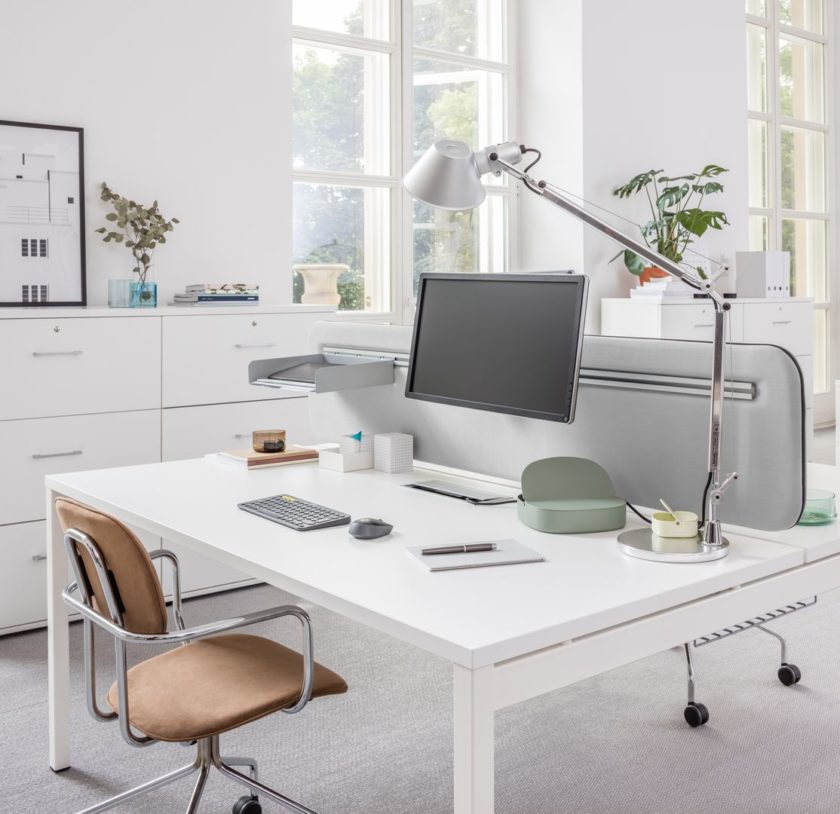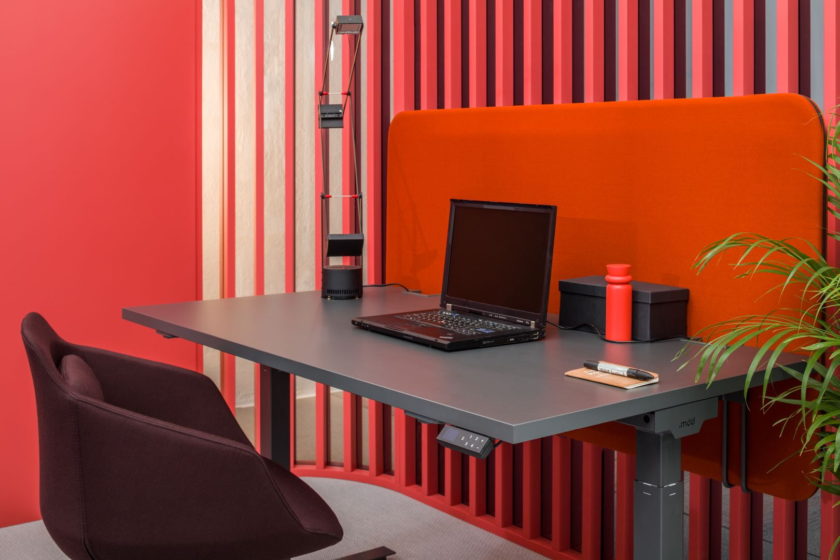Nowadays, adherence to the principles of Ergonomics is still perceived as the obligation of implementing health and safety regulations. These are very specific and precisely determine, e.g. a workstation measurements or maximum range of an employees reach. However, in today’s world those legislations aren’t sufficient enough, they don’t represent the flexibility of a workspace and adjustment to the realistic needs of people.

The idea of customization
A desk is becoming something more than a piece of furniture, and there is more to a chair that meets the eye. The concept of complying with health and safety policies is slowly replaced by the idea of customisation and constructing furniture that meets the requirements of all staff.
Originally, it was during the sale process that employers decided on the final look of a product, but nowadays it’s up the individual users to create their own work station.
It’s an innovative idea but universal and easy in application. The needs are huge. Study conducted by Ergotest proved that an average worker spends at his/hers desk around 7 hours a day, and barely 2-3% of those use Ergonomic furniture. What more, half of work posts doesn’t meet any of the requirements specified in the health and safety policies. More than 35% of respondents have no assigned workstations, use tables in conference rooms or sit at random desks that aren’t intended for the purpose.

Poor savings
The American Society of Interior Designers carried out independent research to identify correlation between well planned office and work efficiency. The study confirmed that dysfunctional workplace has a negative impact on employee’s well-being and lowers their productivity, which translates into substantial company losses. On the basis of the study run in 30 branches of 13 different banks, analysts from COMSATS Institute of Technology came to a similar conclusion. Factors that influenced the employees the most were: lighting, spatial layout, acoustics and furnishings. Representatives of one of American insurance companies admitted that by implementing Ergonomic solutions to the workspace their individual sales grew by 15% compared to their earlier achievements.
Not adhering to the principles of Ergonomics is adversely affecting employees’ mental health and their general well-being. Performing one’s tasks in a sitting position only appears to be easier than physical work, but the truth is it requires the body to be in a forced position for a number of hours a day and is a cause of many health problems: spinal disorders, wrist pain and degenerations ranging from circulatory disorders to respiratory difficulties. However, nearly all of these ailments can be minimised by introducing functional design into an office.
Employees themselves often attempt to improve the quality of their work by using different types of chair support and footstools, however, these aren’t optimal solutions.

Desks
Employers worry that with the level of staff turnover it’s inefficient to adjust workstations to their individual needs. Modern Ergonomics, however, responds to those fears and to the dilemma of whether it’s efficient to have a few employees working at the same desk.
The Drive desk can be adjusted to the requirements of few people at once. Its control panel regulates the desk position without the need of stopping work, which consequently mean a secure and comfortable body posture. Maximum height of the desk is 130cm, which allows employees to stand during work- that’s yet another postulate of Ergonomics.
In western Europe working in a sitting position becomes less popular nowadays. The Public Health England recommends that employees stand or walk for at least two hours a day. However, a large number of people still don’t exercise their statutory right to take a 5 minute break after each hour of work at a computer.

Chairs
A work chair still remains the basis for our ‘day at the office’. Equipping it with castors, swivel chair mechanism or adjustable backrest is a standard practice nowadays. Maintaining the right posture is still our priority as inappropriate body position can cause a number of uncomfortable ailments. Therefore, it is vital to ensure the backrest is wide and contoured to support the lung stretch. Height and backrest regulation as well as easy tilt angle adjustment and headrest that supports the neck are ‘a must’ when searching for a comfortable seat. All these elements correlated with mechanics of the chair allow for a ‘dynamic seat’, provide stability that reduces tension and strain on the body.
The new Ayla seat meets the already mentioned requirements of Ergonomic chair. The full package of functional solutions is also available in the Sava model, with an optional headrest, armrest and 3different measurements of: width, height, depth.

Individual means practical
Despite the existence of very specific health and safety regulations, the concept of ideal workplace is purely subjective. The perfect space should be ever changing and adjusting to the needs of employees; that’s the reason the idea of customization sets modern trends.
It is natural for companies to seek the best specialists, and except for an attractive salary and work benefits employers should provide the potential worker with good employment conditions. By investing in modern workstations, company owners ensure a quick return as employee turnover rate declines and their general well-being improves. However, if turnover does happen, adjusting workstations to the needs of new employees won’t incur additional costs. It’s also a perfect solution to firms that use a job rotation program.
To operate according to Ergonomics and to be work efficient mean using advanced systems that bring invaluable benefits to both staff and their employers.